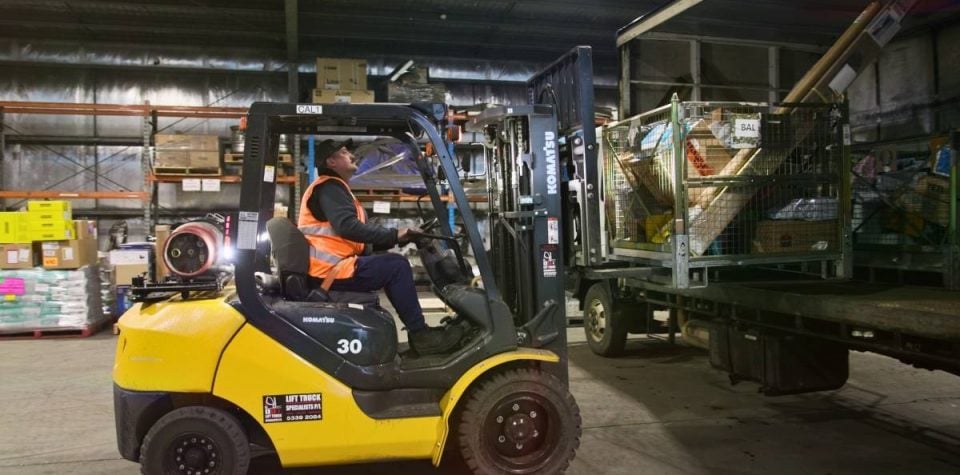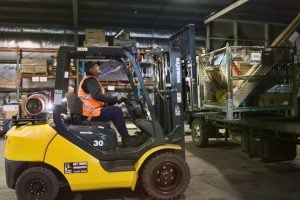Table of Contents:
- The Tyranny of Distance
- Back to the track
- Technology to the Rescue
- Roger that
- Staying on schedule
- From Toorak to Tibooburra
- Back o’ Bourke
- Outback and Back Again
Delivering – freight to addresses in rural Australia can potentially be a difficult job, but with access to the correct planning software, you can ensure that the job gets done.
“Delivering mail to remote communities is a lifeline service that is critical for rural and regional Australians.”
– Julia Gillard (former Australian Prime Minister)
Transport in rural Australia has always been a challenge. The vast distances, the extreme weather, and the wear and tear on vehicles: all of these things make getting goods, mail and packages to remote communities a tough job.
But the advent of new technologies to monitor the progress of freight on its journey from urban centres to far-flung corners of the country has revolutionized delivery systems in rural Australia.
In this article, we will take a look at how modern transport management software systems have made it much easier for logistics operators to get their clients’ goods delivered safely out in the bush.
The Tyranny of Distance
Australia is big. Really big. You might think it’s a long way down to your local Bunnings, but that’s nothing compared to the distance from, say…Toorak to Tibooburra! So one of the big challenges when it comes to delivering packages to rural addresses in Australia is the sheer size of the country.
Australia is the world’s sixth-largest country by land area. Many rural areas are spread out over vast distances, and this can make it difficult and often more expensive for delivery companies to reach destinations in these areas.
Back to the track
Another of the challenges faced by delivery companies who transport goods into the bush is the lack of infrastructure in rural areas. Many rural communities do not have the same level of infrastructure as urban areas, such as well-maintained roads, street lighting, and accurate address information. This can make it difficult for delivery drivers to find their way to rural addresses, particularly if they are unfamiliar with the area.
In addition, some rural addresses may be difficult to access due to their location. Some addresses may be located at the end of corrugated red dirt tracks. They can be up steep hills, hidden in rainforests or in remote areas that are only accessible by 4WD. This can make it difficult for delivery drivers to reach these addresses, particularly if they are driving large delivery trucks.
Technology to the Rescue!
One solution to these challenges is the use of transport management software (TMS). This can help delivery companies to plan more efficient delivery routes, which in turn can reduce the time and cost of delivering packages to rural areas. By using traffic management software, delivery companies can also ensure that their drivers are getting the most up-to-date and accurate address information, which can help to reduce the number of failed deliveries.
Staying on schedule
Everyone’s busy these days. Your drivers are busy, and the folks that they are delivering to out in the bush are also busy. So making sure that delivery times mesh with the shearing shed smoko, the school run, or the local footy kick-off is vital to ensure that the freight gets to its destination at the optimum time.
Transport management software is a great way to optimize your delivery schedules. Delivery companies can use both TMS systems and delivery management software to predict when packages are likely to be delivered, based on factors such as the time of day, the weather, and traffic conditions. This can help to ensure that packages are delivered at a time that is convenient for the recipient, which can help to reduce the number of missed deliveries.
Roger that!
Communication is vital in an efficient delivery system. Transport management software is a highly effective way to improve communication between delivery drivers and their dispatchers: especially when the drivers are way out back.
An effective TMS system allows your drivers to receive real-time updates about changes to their delivery schedules or routes. Dispatchers can also use this software to monitor the progress of their drivers, which can help to ensure that they are staying on schedule.
From Toorak to Tibooburra
Let’s look at a fictional situation, shall we? Imagine a retailer in the Melbourne suburb of Toorak. Let’s call them Ferg’s Coffee Roasters. They reckon that they sell the best coffee in Australia. And today they have two consignments going out: one to a distributor in Dubbo and another going to the Family Hotel in Tibooburra, way out in the far western corner of New South Wales.
They engage a courier company that specializes in getting packages to remote and rural areas. The package is collected and the delivery company’s management software swings into action. It charts the quickest route from the pickup point to the outskirts of Melbourne (one that dodges all the Toorak tractors on Orrong Road!) and the shortest route for the delivery truck to take north, across the border and all the way to Dubbo.
In Dubbo, one of the packages is added to a consignment of other freight heading out to Tibooburra. It is able to do this because freight consolidation systems are in place to join loads heading to the same destination in order to maximize the efficiency of the deliveries.
Back o’ Bourke
The consignment of coffee now heads northwest towards Bourke, passing through Mullengudgery and Coolabah along the way. Each stage of the journey is logged by the TMS. Even the half-hour break the truckie takes in Bourke to get a streak sandwich and a lamington at Tito’s Coffee House.
Beyond Bourke, the single-lane bitumen gives way to red dirt. It’s slower going out here: the road passing the abandoned woolshed at Waka Station and the turnoff to the ghost town of Milparinka. And after a journey of 1,200 kilometres, the consignment of coffee arrives at the Family Hotel in time to be served up to its customers at breakfast the next morning.
In Toorak, the owner of Ferg’s Coffee Roasters gets an automated email from the TMS that the consignment has been delivered. The guests at the Family Hotel can sip coffee out on the verandah in the shade of the ghost gums and watch the dusty action on Briscoe Street. The courier company’s driver is on her way to Thagomindah in Queensland. And the owners of the delivery company are glad they invested in traffic management software.
Outback and Back Again.
Australia is a vast country, with a population of over 25 million people, spread out over 7.7 million square kilometers. The rise of e-commerce and online shopping has seen the demand for package delivery services to rural and remote areas grow exponentially.
By using transport management software, delivery companies can improve the efficiency and reliability of package deliveries to the Outback. It is, however, important for delivery companies to also remain flexible and adaptable to the unique challenges presented by each rural area, and to work closely with local communities to ensure that they are meeting their needs. After all, that’s what is great about going bush in Australia. There are always going to be new challenges to overcome.



